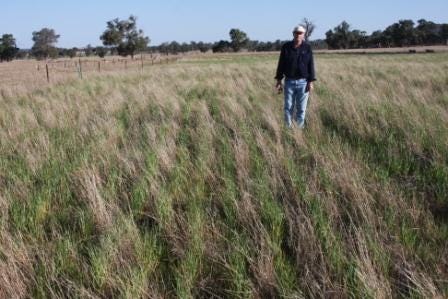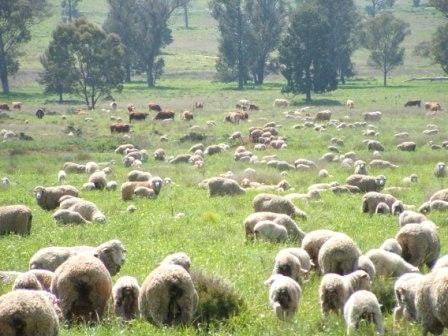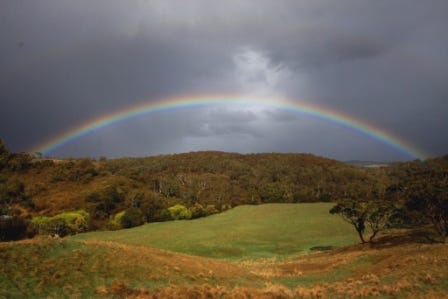Welcome to Terra Firma by Courtney White. I’ve spent my life prospecting for innovative, practical, and collaborative answers to pressing problems involving land and people, sharing them with others. I’d like to share them with you!
Don’t miss the next issue, sign up here:
Announcement: Due to my workload, Terra Firma will now come out every other week. The next issue will be published on Feb. 13th. Thanks!
News Item: The devastating wildfires in Australia – eighteen million acres burned and one billion animals lost – have been making headlines. However, there have been few stories about the role proper land management can play in preventing such tragedies. Here’s one about a native Australian, Julia Watson, who argues for a nature-centered approach she calls ‘Lo-TEK’. “We need to think about different [futures],” said Watson. “How do we not just fall back to using high-tech solutions and use nature technology instead? [We keep] trying to solve problems with the same tool kit that created the problem in the first place.” (see)
I had the honor of visiting Australia a few years ago and spent time on four farms that employed a regenerative approach to their land and livestock. I learned a great deal about carbon, soils, and resilience – topics very much on the mind of many rural Aussies right now, I imagine. I’d like to share two stories, including one about a farmer whose life was transformed by wildfire.

Australia is salty, flat, and mostly dry. Repeated submerging by the ocean over the eons combined with a lack of geological uplift (necessary for weathering rock into topsoil) created thin, nutrient-poor soils that were rapidly depleted by a pattern of colonial agricultural designed for the wet climes of England. Plow, cow, sheep, gun, dog, fox, rabbit, and tractor – all exotic – transformed Australia’s fragile ecosystem into a ravished landscape of eroding gullies, denuded flora, and declining native fauna. The advent of industrialized crop and livestock production after World War II made things worse as tilling and overgrazing continued to deplete what remained of the soil’s fertility.
As I saw on my trip, however, a corner had been turned in Australia’s assault on its soil. On a sheep farm in northwest New South Wales called Winona, owned by Colin Seis, I learned that not only are Australians re-hydrating the soil of their depleted continent but they are re-carbonizing it as well.
In 1979, a wildfire burned nearly the entire farm to the ground and sent Colin to the hospital with burns. Ruined, he vowed to change the way he had been practicing agriculture. He decided to rebuild the soil’s fertility – its carbon stocks – after decades of practices had depleted it alarmingly. The fire created an opportunity – out of the ashes, a new farm would emerge.
Colin raises Merino sheep (for wool), so he decided to take up holistic management, which is a way of managing animals that mimics the graze-and-go behavior of wild herbivores. It was perfectly suited for New South Wales, whose rolling grasslands, decent rainfall (until recently), and lack of native predators made it ideal for raising sheep. But it is what Colin did next that really caught people’s attention.
Acting on an idea from a neighbor, Colin decided to try an experiment: what if he no-till drilled an annual crop into his perennial grass pastures? Could he raise two products from one piece of land: a grain crop + animals? It was a heretical idea. In conventional farming, crops and grazing animals were supposed to be kept separate. But that’s because the traditional practice on cropland is plowing, which eliminates the grasses. Coin wondered: what if you no-till drilled oat or wheat or corn seed directly into the pasture when the grasses were dormant? Would they grow? He decided to find out.
Fast forward to the present – and the answer is a resounding ‘yes!’ Pasture cropping, as it is called, works. Nature likes annual and perennial plants to grow together, Colin told me. Winona grows grain and wool. It’s all carefully integrated and managed under Colin’s stewardship. It’s been productive and profitable too, which suggested that pasture cropping could be an important way to feed people globally.
A research project that compared the soil of Colin’s farm to his brother’s farm next door, which uses conventional agricultural practices, revealed stark differences in soil fertility. The organic content of Winona’s soil was much deeper, indicating that Colin was re-carbonizing his land as the result of the integration of annuals, perennials, and animals. In the study’s Conclusion, Dr. Peter Ampt and Sarah Doornbos wrote:
Rotational grazing and pasture cropping practiced on the innovator site can increase perennial vegetative ground cover compared to the continuous grazing system and conventional cropping practiced on the comparison site. Increased perenniality and ground cover lead to improved landscape function in the pasture through increased stability, water infiltration and nutrient cycling which in turn can lead to improved soil physical and chemical properties, more growth of plants and micro-organisms and an ultimately more sustainable landscape.
That sounds like regeneration to me! Here’s a photo I took of Colin standing in a pasture cropped field:

Later, I visited Eric Harvey on his farm, Gilgai, in central New South Wales. Gilgai also has an important story of regeneration to tell. Employing holistic grazing planning after purchasing the land, Eric was able to expand the number of grass species on the degraded farm from seven to over 130 in less than seven years! He did it by forming the livestock into a herd and carefully controlling the timing of its grazing.
More significant was the composition of the herd: a blend of sheep and cattle, called a flerd. Eric said he has run as many as 5000 sheep and 600 cattle together as a unit. Other than calving and lambing, when the animals need space, he said he’s never had any trouble running sheep and cows together. Nature, in fact, likes mixed-species grazing, Eric told me, because animals complement each other in what they will eat, the composition of their manure, and the way their hooves interact with the soil.
As Eric described it, herbivory creates an organic “pulse” below the ground surface as roots expand and contract with grazing. This feeds carbon to hungry microbes which in turn feed grass plants. The manure “pulse” above ground helps too, especially with nutrient cycling. His plan with the flerd has been to make both “pulses” beat stronger and more steadily. Having two different types of livestock also buffers Eric’s finances against fluctuations in the marketplace.
Did anyone else in New South Wales run a flerd, I asked him? “Not that I’m aware of,” he responded. So why the centuries-old belief that cattle and sheep don’t mix? “It must be a paradigm thing with humans,” Eric replied. “It’s not an issue in nature.”
Here’s a picture of the flerd on Gilgai:

As Australians grapple with the consequences of the fires in upcoming months and embark on the necessary journey of regenerating themselves and their land, I hope they will look to nature – and farmers like Colin, Eric and others – for inspiration.
Resources:
Here’s the Ampt and Doornbos research paper on pasture cropping: https://www.amazingcarbon.com/PDF/CiL%20project%20SEIS.pdf
Here’s a case study about Winona Farm and pasture cropping: https://soilsforlife.org.au/winona-pasture-cropping-the-way-to-health/
Here’s an article from Canada about cattle and sheep running together in a flerd: https://www.canadiancattlemen.ca/livestock/grazing-sheep-and-cattle-together-offers-benefits-for-pasture-and-animals/
Here’s an article about research supporting flerds: https://www.beefmagazine.com/pasture/sheep-cattle-combination-really-works
Here’s one about goats and cattle: https://www.beefmagazine.com/mag/multi-species-grazing-goats-cattle-0801
Here’s one about sheep, goats, and cattle: https://www.agupdate.com/todaysproducer/news/livestock/sheep-cattle-and-goats-provide-successful-grazing-combo/article_fa888aca-6abd-11e9-a016-9b5b09a02eed.html
Video:
Here’s a seven-minute video about Colin and pasture cropping (2019) with great drone imagery (see).
Here’s a 27-minute video of Colin Seis speaking at the Quivira Coalition’s conference in 2012 (see).
Web sites:
COURTNEY’S CORNER
~ Not much news this week!
~ Latest book: Fibershed: Growing a Movement of Farmers, Fashion Activists, and Makers for a New Textile Economy by Rebecca Burgess and yours truly, 2019, https://www.chelseagreen.com/product/fibershed/
~ Here’s my Terra Firma photo of the week - a photo I took of Mulloon Creek Farm in Australia during my trip:

Thank you for reading this issue of my newsletter. It is published every Thursday morning – for free! Please consider sharing it with a friend or two or three:
About me: For twenty years I worked to create a radical center among ranchers, conservationists, agencies and others focused on western working landscapes. Today, I am a full-time writer. My nonfiction books include Forewords by Wendell Berry and Michael Pollan. For more information or to contact me visit: www.jcourtneywhite.com
I am also the author of a MYSTERY novel called The Sun. It is a modern-day story set on a working cattle ranch in northern New Mexico (see). To purchase a copy go here. Here’s an endorsement from Anne Hillerman, New York Times best-selling author of the Leaphorn/Chee/Manuelito mysteries:
Terra Firma means ‘solid earth’ or ‘firm ground’ in contrast to air or water. Historically, it was first used by the Republic of Venice to describe its holdings on the Italian mainland.



